Scientific American Supplement, No. 392, July 7, 1883 by Various, is part of the HackerNoon Books Series. You can jump to any chapter in this book here. THE DEVELOPMENTAL SIGNIFICANCE OF HUMAN PHYSIOGNOMY.
THE DEVELOPMENTAL SIGNIFICANCE OF HUMAN PHYSIOGNOMY.
[Footnote: Abstract of a lecture delivered before the Franklin Institute of Philadelphia, Jan. 20.1881, in exposition of principles laid down in The Hypothesis of Evolution, New Haven, 1870, p. 31.]
By E. D. COPE.
The ability to read character in the form of the human face and figure is a gift possessed by comparatively few persons, although most people interpret, more or less correctly, the salient points of human expression. The transient appearances of the face reveal temporary phases of feeling which are common to all men; but the constant qualities of the mind should be expressed, if at all, in the permanent forms of the executive instrument of the mind, the body. To detect the peculiarities of the mind by external marks has been the aim of the physiognomist of all times; but it is only in the light of modern evolutionary science that much progress in this direction can be made. The mind, as a function of part of the body, partakes of its perfections and its defects, and exhibits parallel types of development. Every peculiarity of the body has probably some corresponding significance in the mind; and the causes of the former are the remoter causes of the latter. Hence, before a true physiognomy can be attempted, the origin of the features of the face and general form must be known. Not that a perfect physiognomy will ever be possible. A mental constitution so complex as that of man cannot be expected to exhibit more than its leading features in the body; but these include, after all, most of what it is important for us to be able to read, from a practical point of view.
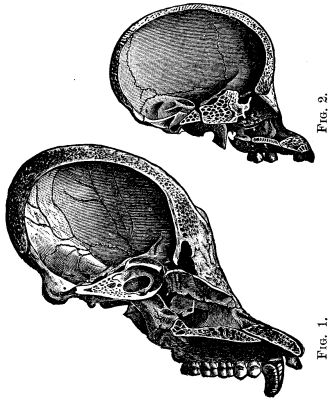
The present essay will consider the probable origin of the structural points which constitute the permanent expression. These may be divided into three heads, viz.:
- Those of the general form or figure.
- Those of the surface or integument of the body, with its appendages.
- Those of the forms of the head and face.
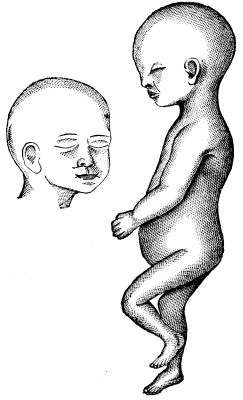
The principal points to be considered under each of these heads are the following:
I. THE GENERAL FORM.
- The size of the head.
- The squareness or slope of the shoulders.
- The length of the arms.
- The constriction of the waist.
- The width of the hips.
- The length of the leg, principally of the thigh.
- The sizes of the hands and feet.
- The relative sizes of the muscles.
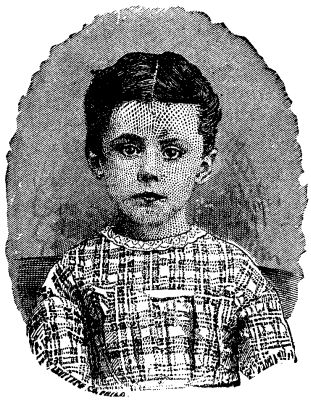
II. THE SURFACES.
9. The structure of the hair (whether curled or not).
- The length and position of the hair.
- The size and shape of the nails.
- The smoothness of the skin.
- The color of the skin, hair, and irides.
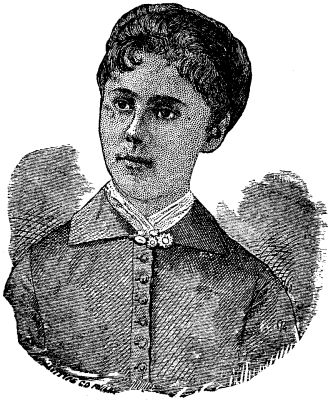
III. THE HEAD AND FACE.
14. The relative size of the cerebral to the facial regions.
- The prominence of the forehead.
- The prominence of the superciliary (eyebrow) ridges.
- The prominence of the alveolar borders (jaws).
- The prominence and width of the chin.
- The relation of length to width of skull.
- The prominence of the malar (cheek) bones.
- The form of the nose.
- The relative size of the orbits and eyes.
- The size of the mouth and lips.
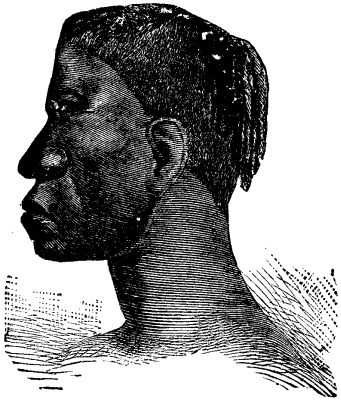
The significance of these, as of the more important structural characters of man and the lower animals, must be considered from two standpoints, the paleontological and the embryological. The immediate paleontological history of man is unknown, but may be easily inferred from the characteristics displayed by his nearest relatives of the order Quadrumana. If we compare these animals with man, we find the following general differences. The numbers correspond to those of the list above given:
I. As to General Form.--(3) In the apes the arms are longer; (8) the extensor muscles of the leg are smaller.
II. As to Surface.--(9) The body is covered with hair which is not crisp or woolly; (10) the hair of the head is short; (18) the color of the skin, etc., is dark.
III. As to Head and Face.--(14) The facial region of the skull is large as compared with the cerebral; (15) the forehead is not prominent, and is generally retreating; (16) the superciliary ridges are more prominent; (17) the edges of the jaws are more prominent; (18) the chin is less prominent; (20) the cheek bones are more prominent; (21) the nose is without bridge, and with short and flat cartilages; (22) the orbits and eyes are smaller (except in Nyctipithecus); (24) the mouth is small and the lips are thin.
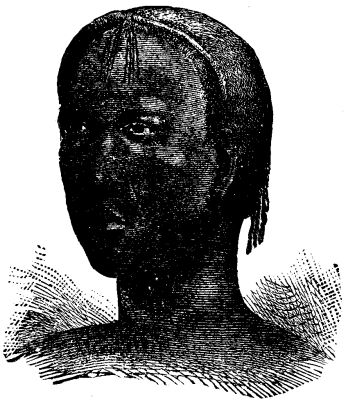
It is evident that the possession of any one of the above characteristics by a man approximates him more to the monkeys, so far as it goes. He retains features which have been obliterated in other persons in the process of evolution.
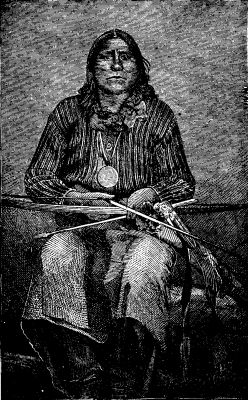
In considering the physiognomy of man from an embryological standpoint, we must consider the peculiarities of the infant at birth. The numbers of the following list correspond with those already used (Fig. 3).
I. As to the General Form.--(1) The head of the infant is relatively much larger than in the adult; (3) the arms are relatively longer; (4) there is no waist; (6) the leg, and especially the thigh, is much shorter.
II. As to the Surfaces.--(10) The body is covered with fine hair, and that of the head is short.
III. The Head and Face.--(14) The cerebral part of the skull greatly predominates over the facial; (16) the superciliary ridges are not developed; (17) the alveolar borders are not prominent; (20) the malar bones are not prominent; (21) the nose is without bridge and the cartilages are flat and generally short; (22) the eyes are larger.
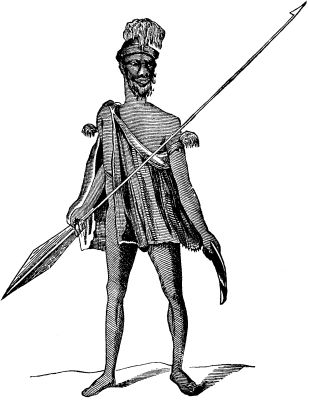
It is evident that persons who present any of the characters cited in the above list are more infantile or embryonic in those respects than are others; and that those who lack them have left them behind in reaching maturity.
We have now two sets of characters in which men may differ from each other. In the one set the characters are those of monkeys, in the other they are those of infants. Let us see whether there be any identities in the two lists, i. e., whether there be any of the monkey-like characters which are also infantile. We find the following to be such:
I. As to General Form.--(3) The arms are longer.
II. Surface.--(10) The hair of the head is short, and the hair on the body is more distributed.
III. As to Head and Face.--(21) The nose is without bridge and the cartilages are short and flat.
Three characters only out of twenty-three. On the other hand, the following characters of monkey-like significance are the opposites of those included in the embryonic list: (14) The facial region of the skull is large as compared with the cerebral; (15) the forehead is not prominent; (16) the superciliary ridges are more prominent; (17) the edges of the jaws are more prominent. Four characters, all of the face and head. It is thus evident that in attaining maturity man resembles more and more the apes in some important parts of his facial expression.
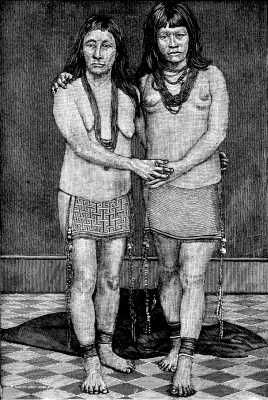
It must be noted here that the difference between the young and embryonic monkeys and the adults is quite the same as those just mentioned as distinguishing the young from the adult of man (Figs. 1 and 2). The change, however, in the case of the monkeys is greater than in the case of man. That is, in the monkeys the jaws and superciliary ridges become still more prominent than in man. As these characters result from a fuller course of growth from the infant, it is evident that in these respects the apes are more fully developed than man. Man stops short in the development of the face, and is in so far more embryonic.[1] The prominent forehead and reduced jaws of man are characters of "retardation." The characters of the prominent nose with its elevated bridge, is a result of "acceleration," since it is a superaddition to the quadrumanous type from both the standpoints of paleontology and embryology.[2] The development of the bridge of the nose is no doubt directly connected with the development of the front of the cerebral part of the skull and ethmoid bone, which sooner or later carries the nasal bones with it.
[Footnote 1: This fact has been well stated by C. S. Minot in the Naturalist for 1882, p. 511.]
[Footnote 2: See Cope, The Hypothesis of Evolution, New Haven, 1870, p. 31.]
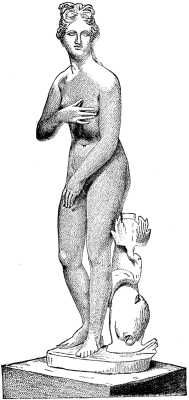
If we now examine the leading characters of the physiognomy of three of the principal human sub-species, the Negro, the Mongolian, and the Indo-European, we can readily observe that it is in the two first named that there is a predominance of the quadrumanous features which are retarded in man; and that the embryonic characters which predominate are those in which man is accelerated. In race description the prominence of the edges of the jaws is called prognathism, and its absence orthognathism. The significance of the two lower race characters as compared with those of the Indo-European is as follows:
Negro.--Hair crisp (a special character), short (quadrum. accel.); prognathous (quadrum. accel.); nose flat, without bridge (quadrum. retard)[1]; malar bones prominent (quadrum. accel.); beard short (quadrum. retard.); arms longer (quadrum. accel.); extensor muscles of legs small (quadrum. retard.).
[Footnote 1: In the Bochimans, the flat nasal bones are co-ossified with the adjacent elements as in the apes (Thulié).]
Mongolian.--Hair straight, long (accel.); jaws prognathous (quadrum. accel.); nose flat or prominent with or without bridge; malar bones prominent (quadrum. accel.); beard none (embryonic); arms shorter (retard.); extensor muscles of leg smaller (quad. retard.).
Indo-European.--Hair long (accel.); jaws orthognathous (embryonic retard.); nose (generally) prominent with bridge (accel.); malar bones reduced (retard.); beard long (accel.); arms shorter (retard.); extensor muscles of the leg large (accel.).
The Indo-European race is then the highest by virtue of the acceleration of growth in the development of the muscles by which the body is maintained in the erect position (extensors of the leg), and in those important elements of beauty, a well-developed nose and beard. It is also superior in these points in which it is more embryonic than the other races, viz., the want of prominence of the jaws and cheekbones, since these are associated with a greater predominance of the cerebral part of the skull, increased size of cerebral hemispheres, and greater intellectual power.
A comparison between the two sexes of the Indo-Europeans expresses their physical and mental relations in a definite way. I select the sexes of the most civilized races, since it is in these, according to Broca and Topinard, that the sex characters are most pronounced. They may be contrasted as follows. The numbers are those of the list already used. I first consider those which are used in the tables of embryonic, quadrumanous, and race characters:
MALE. FEMALE.
I. _The General Form_.
2. Shoulders square. Shoulders slope.
4. Waist less constricted. Waist more constricted.
5. Hips narrower. Hips wider.
6. Legs longer. Legs shorter (very frequently).
8. Muscles larger. Muscles smaller.
II. _The Integuments, etc_.
10. More hair on body, that Less hair on body, that of head
of head shorter; beard. longer; no beard.
12. Skin rougher (generally). Skin smoother.
III. _The Head and Face_.
16. Superciliary ridges more Superciliary ridges low.
prominent.
22. Eyes often smaller. Eyes often larger.
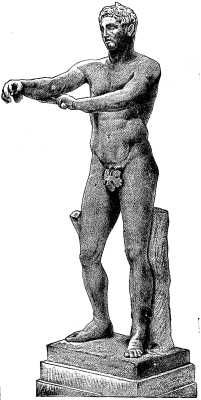
The characters in which the male is the most like the infant are two, viz., the narrow hips and short hair. Those in which the female is most embryonic are five, viz., the shorter legs, smaller muscles, absence of beard, low superciliary ridges, and frequently larger eyes. To these may be added two others not mentioned in the above lists; these are 1, the high pitched voice, which never falls an octave, as does that of the male; and 2, the structure of the generative organs, which in all mammalia more nearly resemble the embryo and the lower vertebrata in the female than in the male. Nevertheless, as Bischoff has pointed out, one of the most important distinctions between man and the apes is to be found in the external reproductive organs of the female.
From the preceding rapid sketch the reader will be able to explain the meaning of most of the peculiarities of face and form which he will meet with. Many persons possess at least one quadrumanous or embryonic character. The strongly convex upper lip frequently seen among the lower classes of the Irish is a modified quadrumanous character. Many people, especially those of the Sclavic races, have more or less embryonic noses. A retreating chin is a marked monkey character. Shortness of stature is mostly due to shortness of the femur, or thigh; the inequalities of people sitting are much less than those of people standing. A short femur is embryonic; so is a very large head. The faces of some people are always partially embryonic, in having a short face and light lower jaw. Such faces are still more embryonic when the forehead and eyes are protuberant. Retardation of this kind is frequently seen in children, and less frequently in women. The length of the arms would appear to have grown less in comparatively recent times. Thus the humerus in most of the Greek statues, including the Apollo Belvidere, is longer than those of modern Europeans, according to a writer in the Bulletin de la Société d'Anthropologie of Paris, and resembles more nearly that of the modern Nubians than any other people. This is a quadrumanous approximation. The miserably developed calves of many of the savages of Australia, Africa, and America are well known. The fine, swelling gastroenemius and soleus muscles characterize the highest races, and are most remote from the slender shanks of the monkeys. The gluteus muscles developed in the lower races as well as in the higher distinguish them well from the monkeys with their flat posterior outline.
It must be borne in mind that the quadrumanous indications are found in the lower classes of the most developed races. The status of a race or family is determined by the percentage of its individuals who do and do not present the features in question. Some embryonic characters may also appear in individuals of any race, as a consequence of special circumstances. Such are, however, as important to the physiognomist as the more normal variations.
Some of these features have a purely physical significance, but the majority of them are, as already remarked, intimately connected with the development of the mind, either as a cause or as a necessary coincidence. I will examine these relations in a future article.
About HackerNoon Book Series: We bring you the most important technical, scientific, and insightful public domain books.
This book is part of the public domain. Various (2005). Scientific American Supplement, No. 392, July 7, 1883. Urbana, Illinois: Project Gutenberg. Retrieved https://www.gutenberg.org/cache/epub/8742/pg8742-images.html
This eBook is for the use of anyone anywhere at no cost and with almost no restrictions whatsoever. You may copy it, give it away or re-use it under the terms of the Project Gutenberg License included with this eBook or online at www.gutenberg.org, located at https://www.gutenberg.org/policy/license.html.

